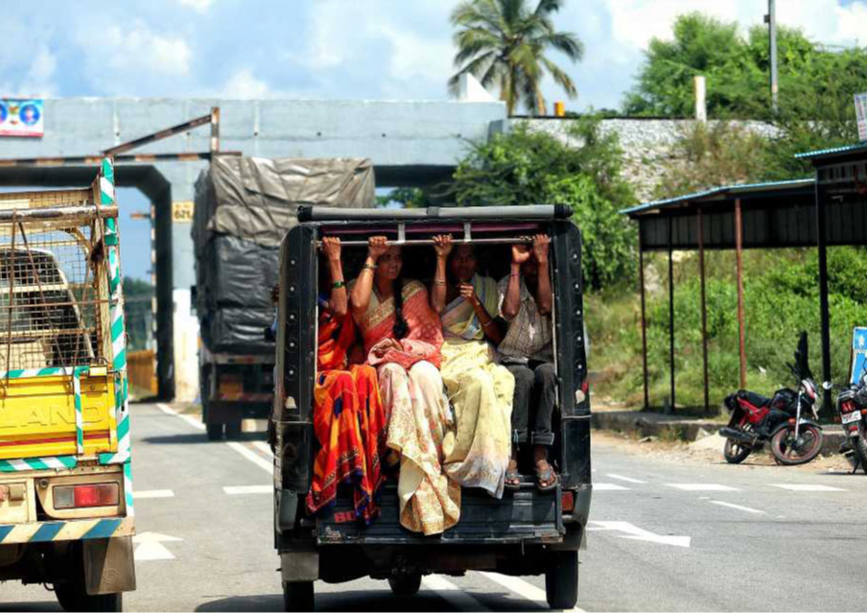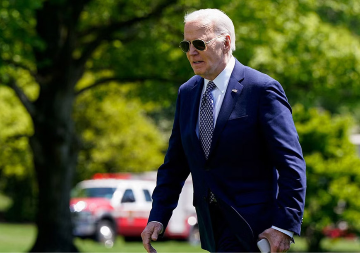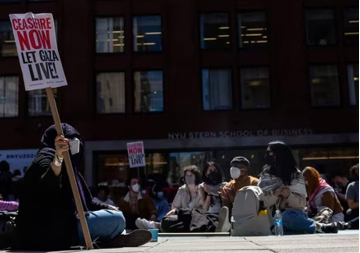
Increasing urbanisation has altered travel patterns and increased transportation demands in India’s cities. Enhanced mobility needs have led to an explosion of two- and four-wheelers, exacerbating urban transport and environmental challenges. Despite government initiatives to develop public transport systems, insufficient capital investments and persistent infrastructural deficits in most cities have widened the gap between transport planning and execution. Consequently, only a few large cities benefit from extensive transport systems, while people in smaller cities and towns grapple with limited or no public transport options.
Privately owned and informally operated, they offer shared mobility typically facilitated by three-wheeled auto rickshaws with a capacity of three to six passengers per vehicle.
Such dichotomy has catalysed the emergence of paratransit or Intermediate Public Transport (IPT) services in urban India. Privately owned and informally operated, they offer shared mobility typically facilitated by three-wheeled auto rickshaws with a capacity of three to six passengers per vehicle. Paratransit services, encompassing both point-to-point (P2P) and shuttle services between fixed origins and destinations, constitute a significant portion of shared trips, especially with increasing app-based ‘shared mobility’ solutions offered by companies like Ola, Uber, and many more. These apps aggregate shared vehicles, including motorcycles, taxis, three-wheelers, and two-wheelers, to serve rental as well as on-demand mobility needs.
Paratransit scenarios in Indian cities
Paratransit vehicles in India include for-hire light motor vehicles (LMVs), taxis, and two-wheelers. According to the Ministry of Road Transport and Highways (MoRTH) data, LMVs, taxis, and two-wheelers for hire accounted for 26 percent, 12 percent, and 1 percent of the 25.89 billion vehicles registered in 2019. While three-seaters constitute 67 percentage of the total LMVs, four-to-six-seaters constitute nearly 33 percent respectively.
Additionally, registered taxis such as motor cabs, maxi cabs, or other variants also serve paratransit needs. Ola and Uber offer shared and rental cab, auto-rickshaw, two-wheeler, and taxi services across more than 75 Tier 1 and II cities in India. Other companies such as Meru, BluSmart, Quick Ride, and Lyft also provide shared and rental cab services nationwide. Established in 2006, Meru operates in 24 cities, while BluSmart, founded in 2019, operates in 10 cities. Quick Ride serves nine Tier I cities in India, and Lyft, which was launched in 2021, operates exclusively in West Bengal.
Ola and Uber offer shared and rental cab, auto-rickshaw, two-wheeler, and taxi services across more than 75 Tier 1 and II cities in India.
Rapido commenced operations in 2015, offering bike and taxi services in 100 cities and auto rickshaws in 26 cities. Another significant player, Jugnoo, has provided cab and auto rickshaw services in 50 cities since 2014.
While the average modal share of paratransit services is 25 percent of the total motorised trips, it exceeds the use of public transport by ninefold in most smaller- and medium-sized Indian cities. This trend indicates the significant dependence of city dwellers on paratransit services as a convenient mode of transport.
Challenges to paratransit
The paratransit system in India primarily encompasses three principal stakeholders: users, paratransit operators (comprising auto rickshaw drivers and shared mobility service providers), and the government. Auto-rickshaw drivers face many challenges, including internal competition, meagre monthly earnings, non-revenue-generating kilometres, elevated maintenance expenses, obligatory payments to traffic authorities for operational purposes, exposure to environmental pollutants, and the deficiency of fundamental infrastructure, including designated stands and parking facilities.
Conversely, shared mobility providers encounter obstacles such as operational deficits, lack of comprehensive policy frameworks and regulatory guidelines, inadequate supporting infrastructure such as designated pick-up and drop-off locations, and societal preference towards private transportation modes. They are also often accused of unprofessional driver behaviour, fare overcharges, safety deficiencies, subpar travel experiences, prolonged wait times during peak hours and reliance on cash transactions, among other issues.
While the average modal share of paratransit services is 25 percent of the total motorised trips, it exceeds the use of public transport by ninefold in most smaller- and medium-sized Indian cities.
The government, as a key stakeholder, also grapples with concerns regarding paratransit services, including heightened competition vis-à-vis the formal transit system, resultant declines in transit ridership, exacerbated traffic congestion, resistance from union entities towards policy enforcement and escalated levels of air pollution.
Policy interventions to integrate paratransit systems
Paratransit services have been a contentious topic of sustainable urban transportation in metropolitan areas. As feeders or complementing formal transportation networks, these services have spurred debates regarding their efficacy. Notably, Tier I and II cities of India, where formal transit systems were introduced at later stages, witness a conflict of interest between paratransit services and formal transportation modes—paratransit services are often found competing with, rather than complementing the extant formal public transport system. Regardless, paratransit systems play a pivotal role in developing economies like India, facilitating the realisation of sustainable and integrated multimodal transport systems within urban landscapes.
The current situation underscores the urgent need for a comprehensive policy and regulatory framework to govern paratransit services effectively across Indian cities. Present policy formulation concerning auto-rickshaws exhibits shortcomings, failing to adequately consider the needs of the drivers who provide a valuable and cost-effective transportation service. The absence of coordination and communication among diverse governmental bodies and stakeholders involved in regulating and managing paratransit services impedes effective policy implementation.
The National Urban Transport Policy emphasises the integration of diverse urban transportation modes. Still, it fails to delineate strategies for integrating paratransit services with formal transit systems, which are critical to addressing first and last-mile connectivity gaps within urban transit networks. Achieving seamless operational, informational, institutional and fare integration between these systems necessitates heightened attention. Moreover, the quality of paratransit services suffers from a lack of formal training and skill development initiatives, hindering service excellence. Enhancing the professionalism and service quality of paratransit operators through comprehensive skills development and training initiatives is imperative for the successful execution of policies aimed at fostering sustainable and efficient urban transportation systems across cities. A robust monitoring and evaluation framework is essential to facilitate timely adjustments and enhancements, fostering effective policy interventions. The absence of comprehensive data on policy impact contributes to a lack of accountability and ability to make well-informed future policy decisions.
Enhancing the professionalism and service quality of paratransit operators through comprehensive skills development and training initiatives is imperative for the successful execution of policies aimed at fostering sustainable and efficient urban transportation systems across cities.
Implementing institutional frameworks, such as Public Transport Authorities (PTAs), emerges as imperative for ensuring cohesive governance and regulation across diverse mobility modes in urban India. A Public Transport Authority (PTA) or a Public Transport Council (PTC) assumes responsibility for pivotal policy determinations, including service standards spanning various transportation modalities. It formulates a comprehensive multimodal public transport blueprint tailored to the city's needs. The PTA/PTC is tasked with issuing contracts to operators, mandating that services are aligned with pre-defined service schedules and mutually agreed terms of remuneration. Such a structured approach will foster efficiency and accountability within the public transport sector, enhancing of urban mobility standards.
Furthermore, the prevailing regulations for shared mobility solutions position them as contenders to the established auto-rickshaw services. Consequently, the regulatory frameworks such as ‘Aggregator Rules’ and ‘Taxi Regulation’ of various municipalities put permit limitations and minimum fare regulations in place to mitigate competition with alternative shared modes. Conversely, the ‘Taxi Guideline’ delineated by the Ministry of Road Transport and Highways (MoRTH) advocate for a more inclusive approach, framing shared mobility as a component of the solution rather than a contributor to congestion issues.
Cities must consider shared mobility services as on-demand solutions capable of diminishing reliance on personal vehicular transportation rather than direct competitors to public transit. Models like ‘Mobility as a Service (MaaS)’ implemented in cities such as Vienna and Helsinki exemplify effective integration of ‘new mobility’ solutions with formal public transport networks. Piloting such initiatives in Indian cities can facilitate thorough assessments of their influence on public transit ridership.
Nandan Dawda is a Fellow with the Urban Studies programme at the Observer Research Foundation
The views expressed above belong to the author(s). ORF research and analyses now available on Telegram! Click here to access our curated content — blogs, longforms and interviews.




 PREV
PREV


